The rise of cartoon imagery in contemporary art mirrors the ways capitalism has made us all malleable
Animation — which was considered the pinnacle of early cinematic innovation — has continued to be associated with juvenility. Though September 2014 marked the last airing of Saturday morning cartoons on U.S. network television (a reflection of digital distribution’s impact), cartoons are still widely associated with what children watch or with the perpetual adolescence embodied by “adult” cartoons such as South Park, Beavis and Butt-head, and The Simpsons.
Because they evoke a child’s supposedly passive consumption of whatever content is aimed at them, cartoons trace a political horizon defined by the profound absence of alternative possibilities. Within the globalized consumer culture, the persistent popularity of cartoons reflects the erosion of political participation in favor of a virtualized and atomized space of consumption. Many cartoons are defined by an affect of inertia and slackerdom, immersing viewers in adolescent fantasy spaces that would seem to refute any sense of personal transformation or wider political possibility. Where South Park is marked by the curious discrepancy between its adult audience and its toilet-humor-obsessed eight-year-old protagonists, Beavis and Butt-head's experiences are centered on the couch from which its two protagonists consume entertainment, weed, and junk food.
The deviant attitudes of cartoon slacker culture reflect an apathy stemming from the precariousness of basic economic and civil liberties that nurture the feeling of having some control over our futures. Amid the moral bankruptcy of Wall Street, an ever-encroaching surveillance state, massive violence abroad and at home, and the constant hypocrisy of politicians and the media, the rise of slacker culture and its passive consumables from the early 1990s onward represents a recognition and reaction to emergent global economic conditions.
In puddle, pothole, portal, a recent Sculpture Center exhibition of 23 artists including Jamian Juliano-Villani, Marky Leckey, Win McCarthy, Danny McDonald, Saul Steinberg, and Jordan Wolfson, the cartoon is taken to represent the mixture of affects deemed “nonproductive,” including violence, deviancy, adolescence, and laziness. Juliano-Villani, for instance, who lifts cartoons from a variety of contexts to create works laden with symbols of dramatized sexuality, told ArtNews in a recent interview, “My paintings are meant to function like TV, in a way. The viewer is supposed to become passive. Instead of alluding or whispering, like a lot of art does, this is art that tells you what’s up. It kind of does the work for you, like TV does.”
The puddle, pothole, portal show latches on to what may be considered a larger trend in contemporary art: the promiscuous use of cartoon figuration. A list of artists using cartoon imagery could be easily assembled across genres and generations, and includes younger artists like Ed Fornieles, Mark Leckey, and Rachel Harrison, as well as predecessors such as Andy Warhol, Keith Haring, Claes Oldenburg, and Roy Lichtenstein. What this exhibition and many of its artists demonstrate is the cartoonization of the body in response to shifts in technology and what capital can demand of labor.
As capitalism has become more globalized and its commodities more immaterial, it has separated producers further and further from the objects, ideas, and subsequent value that they produce. And by developing ever faster methods of circulation — faster media and markets — it has also exploded the barriers that once contained the reproducibility of images and ideas. Both of these developments can be analogized to cartooning the body.
The cartoon reflects ways in which human bodies are configured to serve capital, undermining the body's all-too-human limitations and driving it to impossible forms of immaterial excess. Cartoons depict exaggerated, porous organisms that readily seep into and sponge from their surroundings. Cartoons don’t depict bodies within environments, but bodies pollinating and knotting with their surroundings, both feeling and being felt.
While maintaining a veneer of childishness, cartoons render the images birthed in fast-paced, high volume media environments more easily digestible and more immediately affecting. Cartoons are notable for the ease by which they are appropriated, reproduced, and customized. Simplicity of line and exaggerated features makes replication easy, as do their ubiquity across media, which makes them available as "found" images. In this sense, cartoons stand in for the ease with which labor can be expropriated from a labor force that is increasingly made of interchangeable parts. Cartoons are both an abstraction and particularization of the body. Their readily malleable forms mimic the profound depersonalization brought about by the constant, accelerated shuffling of symbolic meanings in the ordering of the social, even as they are hyper-customizable.
Due to their elasticity, cartoonized bodies are prone to acts of violence, massively capable of absorbing and recovering from violence, and are subject to inhuman, bottomless appetites. This is literalized most obviously in the desperate and violent shenanigans of Warner Brother’s Looney Tunes cartoons. The Road Runner and Wile E. Coyote, for example, farcically enact skits in which they constantly give or receive painful blows but somehow always manage to avoid death. Allegorizing the worker's body under capitalism, these cartoon figures toil ever onward yet absorb endless amounts of pain in the process.
As depicted in art, cartoons are not just mass objects, capable of undermining art's purity and autonomy (although they have often served this function). They also offer new ways of imagining the relationship between images, bodies, and things. As Ruba Katrib notes in the puddle, pothole, portal catalog, the special thing about cartoons is that "they can do things that we cannot." Their ability to both represent the physical body and to stretch it in impossible, gravity-defying ways offers a unique way of representing, in allegorical form, the immaterial contortions that shape the present era.
Artists have long been aware of this subversive potential. For instance, in the early 20th century, Dada artist Hannah Höch's contorted, collaged bodies, pieced together from magazines, depicted bodies fluidly extending into the capitalist sphere but also being broken by their newfound contortive possibilities and disembodied.
In the 1990s and 2000s, “mega-artists” Damien Hirst, Takashi Murakami, and Jeff Koons used depictions of cartoons or cartoonized bodies in their work to upend views of artists’ agency within a rapaciously capitalistic environment, as Ben Davis discussed in 9.5 Theses on Art and Class. Koons, for example, reconceived of his Flower Puppy sculpture as a giant parade balloon for the 2007 Macy’s Day Parade, embracing the commerce, populism, and advertising of the parade spectacle and its prerequisites.
But more recently, cartoon figuration in contemporary art has intersected with meme environments like 4chan and Tumblr, where cartoons have proved amenable to these platforms' favored forms of iterative adaptation and recirculation. Cartoonizations of the body literalize the networked quality of images within contemporary art, which increasingly circulate on the internet and in mass culture and are authored by multiple creators and subjectivities.
The initial emergence of the cartooned readymade in art pointed to a shift away from the artist as creator to the artist as a dynamic consumer, an animator of cultural forms and ideas that may operate independent of the artist's control. In the work of Sigmar Polke, cartoon figures are used to mark an intrusion, a melancholic malfunctioning of the space of painting, pointing to the impossibility of autonomy in postmodern mass culture. Polke's gaudy work from the early '80s – which mixed illustrative figures with textiles, photographs and abstract squalls of paint – suggests an increasing instrumentalization of bodies in service of producing social and aesthetic meaning. Cartoons mirror the position of the artist/consumer hybrid produced by image-driven capitalism.
Where Polke's cartoons suggest the intrusion of capitalism into the most private aspects of everyday life, Jordan Wolfson explores this same refusal as a full-blown descent into perversity. The artist's lurid, sexualized caricatures document the splintering of contemporary subjectivity, in which identity, cut and pasted from one incongruous context to another, is reduced to what Richard Birkett calls "a particularly rabid cultural meme": fluid, infinitely exchangeable, and subject to frightening outbursts. In Wolfson’s 14-minute video “Raspberry Poser,” an Alfred E. Newman–like kid cleaves his stomach and then plays with his organs like spaghetti, makes blunt smoke “o-s” and then, stuck behind the bars of a cage, dances atop a cartoon elephant. In a 2013 interview with Esther Leslie, Wolfson describes his pride in not always being conscious of what he is doing, an attitude that reflects the reality of mass image circulation and appropriation, which has diluted the artist's responsibility for the meanings and effects their work might generate.
The employment of cartoon imagery marks an acknowledgement of the artist’s loss of autonomy, of their being the sole proprietor of an artwork’s meaning, and thus constitutes a recognition of the role of mediation in art. The fluidity and flexibility of cartoons as symbols, their ease of reproducibility, their circulation as branding, and their mythological qualities make them ideal representations for expanding definitions of artistic agency within current prevailing economic conditions.
Beyond this, the cultural proliferation of cartoons in particular and animation more generally reflects the increasingly ambiguous stakes of life itself at a moment where the human subject would seem to be increasingly subjected to its own retooling at the hands of finance capital and the algorithmic programming of social media. At the heart of animation is always a question of agency, which reminds us of the subversive potential of breathing life into dead objects.
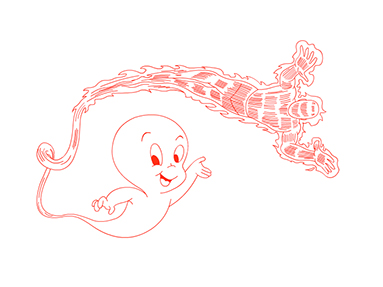
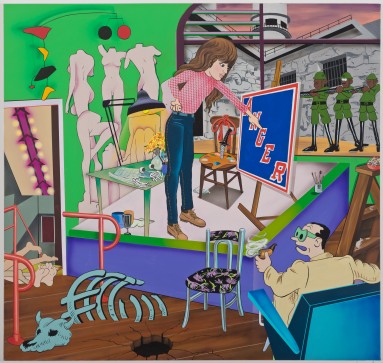
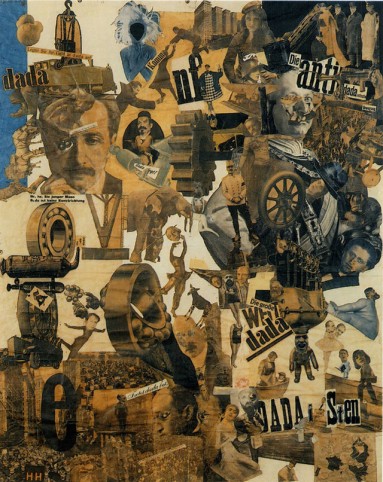
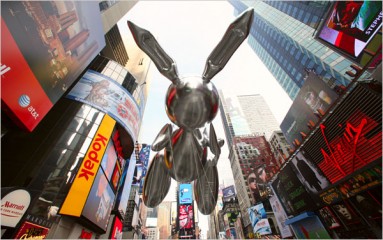
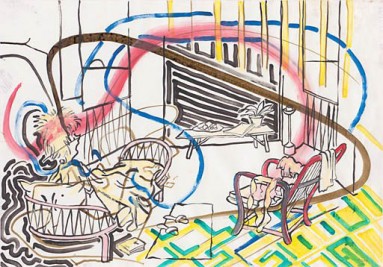
Comments are closed.